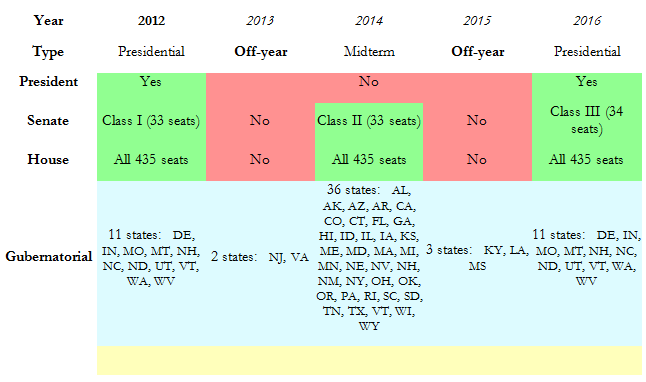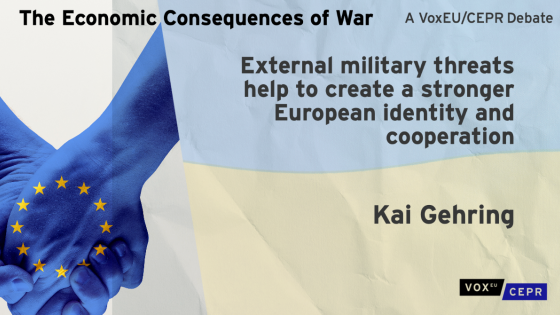One of the immediate causes of the Greek crisis was the interplay between the electoral cycle in Greece and the discovery that the publication of statistical data on the Greek government financial accounts had been manipulated for political reasons.
The repeated and partly ineffective attempts to solve the crisis following the realisation of the magnitude of the disequilibria were also linked to the sequence of elections in the various members of the EU, in particular in the Eurozone.
Thus, it was not only Greece's electoral cycle that hindered the search for a solution to the country's crisis. Similar and perhaps more important effects resulted from the electoral cycles of Germany and France in particular (and those of comparatively minor countries such as Holland, Finland and Slovakia).
It also became clear that – aside from Greek-specific solutions – the length of the period during which various measures for solving the crises were enacted was so long as to make the crisis itself, and its economic and political consequences, much deeper than they would have been if a more rapid process had been followed.
It is therefore important to better study the sequence of events of Europe-wide electoral cycles that marked the series of proposals, meetings, and decisions that may have finally led us to the end of the tunnel. Or, if nothing else, to understand why the tunnel was so long1.
Electoral cycles and the economic crisis
A determinant element in procrastination and the delaying of decisions was the almost continuous sequence of electoral cycles that followed one from another. Aside from Greece itself, Germany, and most major EU countries, less economically and politically important countries were also instrumental in delaying, if not blocking, the decisions that were eventually taken. In nearly every case, negotiations occurred during an electoral period2.
While a complete chronology of such sequence can be provided, an approximate back-of-the-envelope computation can easily be made3. Let us consider that the EU is made up of 27 countries and that 17 of them are members of the Eurozone. For simplicity, consider the following.
Regarding national elections,suppose that there are national elections in each country every four years, with internationally uncoordinated lengths of the life of any given parliament. More precisely, let us assume that the probabilities of national elections are distributed through time according to a rectangular distribution. Consequently:
- In every quarter there is likely to be 1.7 national elections in the EU and 1.1 national elections in the Eurozone.
Regarding regional elections: simplifying, suppose that there are on average five regions per country and that elections are held in every region every four years. Consequently;
- In every quarter there would be 8.4 regional elections in the EU and 5.3 regional elections in the Eurozone.
Combining national and regional elections, and, for simplicity, assuming independence in timing of regional elections with respect to national elections, and international independence among all of them,
- In every quarter there would be 10.1 elections in the EU and 6.4 in the Eurozone;
- Thus, in the Eurozone there would be an election – national or regional – less than every fortnight.
These approximate numbers probably underestimate the actual number and frequency of elections, as they do not take into account factors such as elections that have been called before the statutory maximum life of parliaments. An additional element to be taken into account is the possible interference of national referenda relating to European treaty reforms. These could have an even more paralysing effect than national or regional elections on cooperation between countries.
Institutional reform
In order to address this problem some sort of institutional reforms are necessary in the EU, or at least among the Eurozone countries.
Leaving aside the numerous reforms that could help solve the problem along other avenues than synchronising elections – such as further changes in calculating a majority, a reduction in the number of voting countries by strengthening the areas of cooperation, sanctions and suspensions of voting rights, and reductions in the number of issues requiring unanimity – a radical reform could be reducing the number of political cycles through synchronising them.
In the US system, for instance, election day occurs on the Tuesday after the first Monday in November, which is also usually the first Tuesday in November4. The earliest possible date is 2 November and the latest possible date is 8 November. In this period elections at all levels – federal, and in almost all states – have to be held (see Figure 1)
Figure 1. Basic rotation of US general elections (fixed-terms only)
It is time Europe tries to find agreement over an agreed date when at least national elections in all the member states can be held, together with elections for the European Parliament.
Achieving a common period of voting across Europe
How could such a EU-wide reform be reached? There are two ways. On one hand, an immediate, one-off change, a ‘big-bang solution’. On the other, a transition period to a final and unique electoral date.
The big-bang solution would be preferable because it delivers the final result in one shot. For the same reason it would be politically difficult to accept. To make it more acceptable it may have to delay the time of the next European election to a date later than the next national elections of all the member countries.
A better solution is to postpone the date of elections in those countries where they should otherwise be earlier than the next elections for the European Parliament, and to anticipate them in those countries where they are scheduled after the next European parliamentary elections.
This also seems somewhat difficult to agree upon politically, as the incumbent governments may not like to see their parliamentary base to be renewed earlier (in the second case, i.e. anticipation), while the opposition to the incumbent governments may not like to see them stay in power for a longer time than normally stated (in the first case, i.e. postponement).
A detailed model for transition
In order to meet this difficulty, a third solution could be designed, whereby a period of transition is agreed upon, according to the following rule.
This is made up of two sides: national elections that are due ahead of the next European elections will be postponed by a fraction of the remaining period of time left until the next European elections. For example, if a government has a 60% majority, its term in office will be postponed by 60% of the period remaining between the time the elections should normally be held and the time of the European elections.
National elections that are due after the next European elections will be anticipated by a fraction of the remaining period to the next European elections; the fraction will be equal to 1 minus the share of seats in Parliament that support the incumbent government. For example, if a government has a 60% majority, its term in office will be shortened by 40% of the period remaining between the time the elections should normally be held and the time of the next European elections.
This asymmetry is meant to take into account the interests of the opposition: the stronger it is, the stronger its interest in opposing the extension of the term of the incumbent government, or its interest in anticipating elections ahead of their normal date.
In order to make the rule more manageable, a discrete application of it will be preferable. For example, in case the extension of the term in office should be extended, according to the rule, so as to come close to less than six months to the European elections, then the term is fully extended to the time of the European elections; correspondingly for the case of anticipation.
In order to avoid the gap between national elections and the European elections, it is also necessary to agree that in the countries where national elections have been partly postponed, they will be further postponed after the first round, and similarly in the countries where the national elections have been partly anticipated, they should be further anticipated in the next round.
Following these rules, and adopting a final discrete jump when the time lag is shorter than six months, should ensure that in two or three rounds of five years each, all countries converge with their national elections to the same date as the European elections.
Consequences
A major additional advantage of converging to the same date for European and national elections would be to enhance among European voters and political parties the sentiment that European elections are at least as important as the national ones. In fact, there are positive externalities in information and political standing for both electors and politicians at different electoral levels.
In short, the synchronisation of the two types of elections should positively contribute to making the EU more important in the view of its citizens.
References
BBC (2012), “Timeline: the unfolding eurozone crisis”, 13 June.
Breuss F (2008). “A common election day for the Eurozone?”, Kyklos, 61(1), 19 – 32.
Sapir A, Sekkat K (1999), “Optimal electoral areas: should Europe adopt a single election day?”, European Economic Review, 43, 1595 – 1619.
Wikipedia (2013), “European sovereign-debt crisis”.
1 For a very detailed chronology of the Greek crisis within the overall Eurozone crisis, see BBC (2012), which extends up to June 2012. Also an extremely rich chronicle is available in Wikipedia (2013), which, as of now, is kept updated to the end of 2012.
2 The economic benefits and costs of synchronizing electoral cycles in the EU have been studied by Sapir and Sekkat (1999) within the theoretical framework of international policy co-ordination. However, they concentrate on the economic aspects, and not also on the purely political benefits that should come from synchronising National elections with European elections. An empirical study in the line of Sapir and Sekkat is provided by Breuss (2008).
3 For a chronology of elections in Europe, see http://www.nsd.uib.no/european_election_database/
4 See Wikipedia, http://en.wikipedia.org/wiki/Election_Day_(United_States). The table above is taken from it and shows the calendar of elections in the period 2012-2016.


